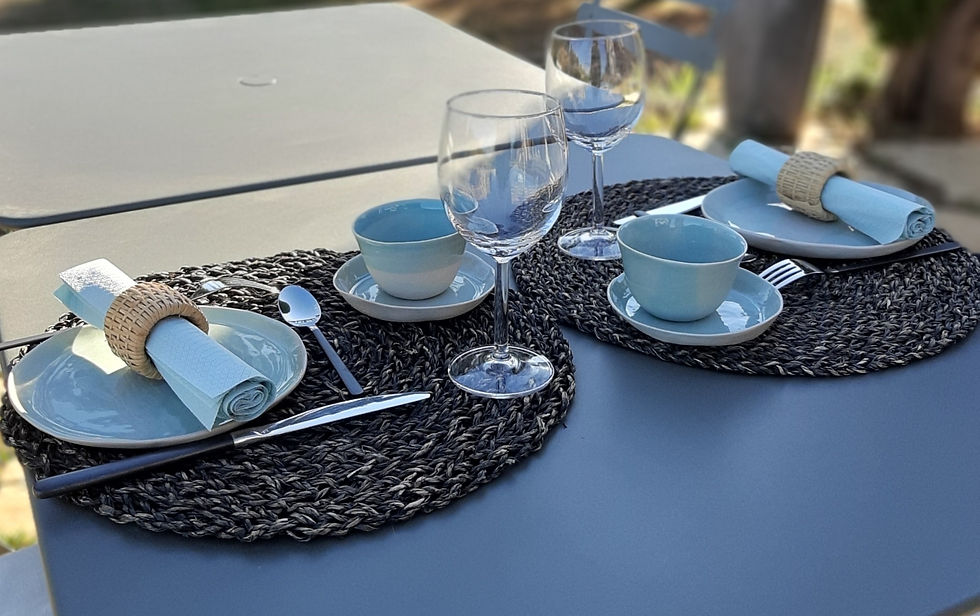Unique handmade tableware at Domaine de la Xavolière.
- Olivier
- Dec 6, 2022
- 3 min read
Updated: Jul 22
Interview with Annick Duboscq, a fire artist and ceramist who handcrafts unique, authentic and responsible pieces of tableware that have a special place in Stéphanie's heart.

Where does your passion for ceramics come from?
Ceramics is the art of working and firing clay. This word comes from the Greek word "keram" which means clay. It is the first art of fire, before that of metals and glass.
When Stephanie asked me to make the breakfast dishes for her guests, I was surprised, delighted and impressed.
It must be said that I started ceramics only about ten years ago. Why did I start? I didn't know. One day, while passing in front of the ceramic workshop created by Alexandra Garrigues, I was seduced by her work of great finesse and delicacy both in the forms and in the colors. Since then I have worked under her expert, vigilant and attentive eye. She taught me the rudiments of this art. Later I remembered my childhood vacations in Moustiers-Sainte-Marie. This village located in Provence at the edge of the Gorges du Verdon is famous for its ceramics. I had the chance to discover the workshop of Simone Garnier who worked the clay of Moustiers in a totally different way than other pottery makers. I loved the subtlety and elegance of her work that I found in Alexandra's and I understood why I had pushed the door of her workshop.
How did you design the ceramic pieces for the Domaine de la Xavolière?
I got to work for Stephanie and we started to think. I proposed different prototypes to her, some of which she liked, others which left her perplexed. We opted for very simple and fine shapes. No two pieces are identical, each plate, bowl, carafe or cup is handmade.
What material did you choose?
There was also the question of the material, the type of clay, i.e. the choice between porcelain, earthenware or stoneware. All natural. We ruled out earthenware, which is a clay paste generally fired at a temperature below 1000 degrees Celsius before being glazed. We hesitated between Porcelain and stoneware. Porcelain is composed of feldspar, kaolin or quartz, fired several times at very high temperatures, which results in a fine, less porous object with a beautiful white color.
Stoneware is a clay paste that vitrifies and solidifies after two high-temperature firings to be biscuit-fired and covered with glaze. It is by adding colorants that the desired color is obtained.
In the end, stoneware won out for its nobility but also for its qualities of density and solidity. But it is especially for the celadon green glaze that Stéphanie wanted and which turned out to be magnificent after many tests.
The stoneware, very resistant, is ideal for creating simple, pure forms that fit perfectly into the natural and minimalist decoration of the Domaine de la Xavolière.

How did your collaboration with Stéphanie go?
Stéphanie chose beautiful natural ceramic objects to represent the art of living at the Domaine de la Xavolière. It is a way of listening to the craftsman, to others and to oneself that respects the naturalness, the authenticity and the time needed to design each unique piece.
We have worked together for over a year to create the bowls, plates and decanters in which Stephanie takes such pleasure in preparing breakfast for her guests.

If you want to discover the wonderful place where these plates and bowls are made, go to https://garrigues-ceramiques.com/
Enjoy your visit, discovery and tasting.
Annick Duboscq
Fire artist









Comments